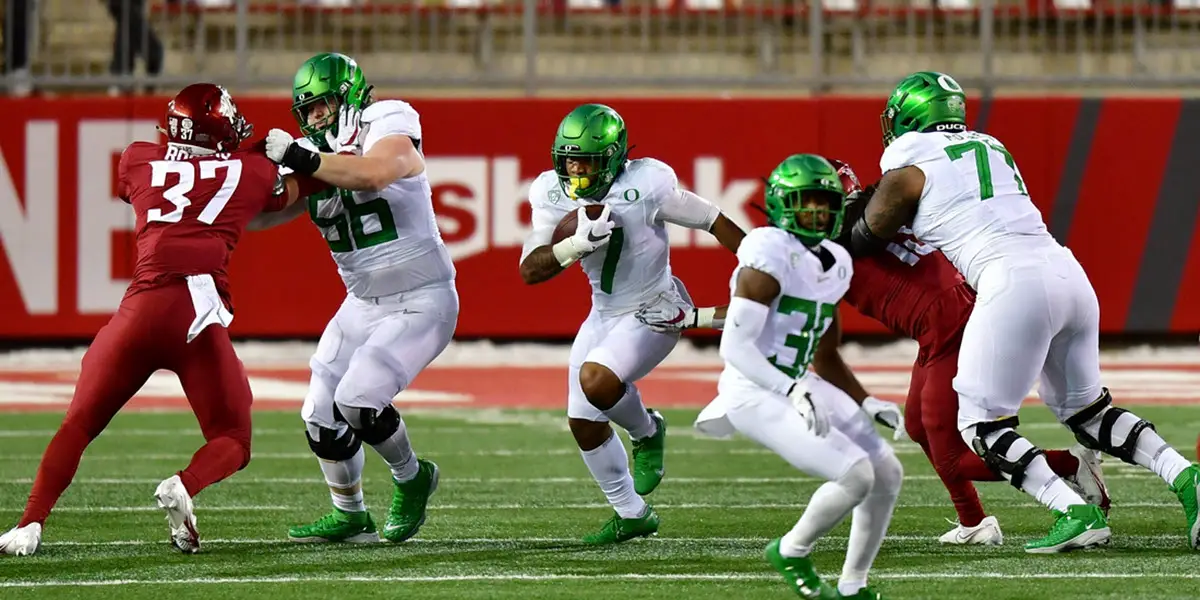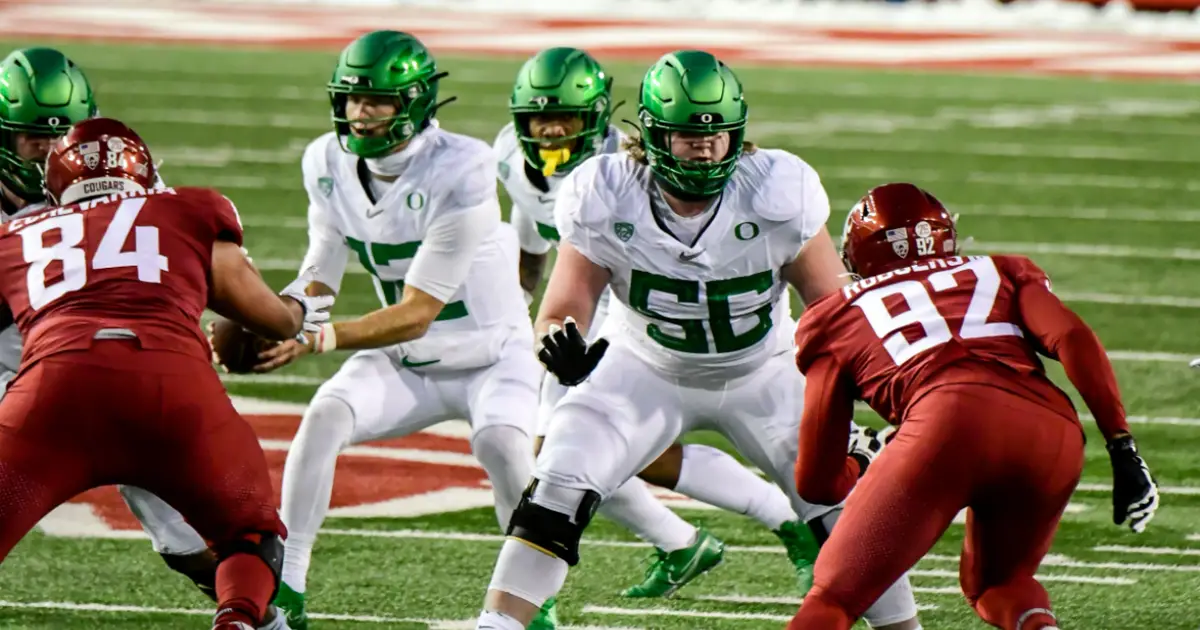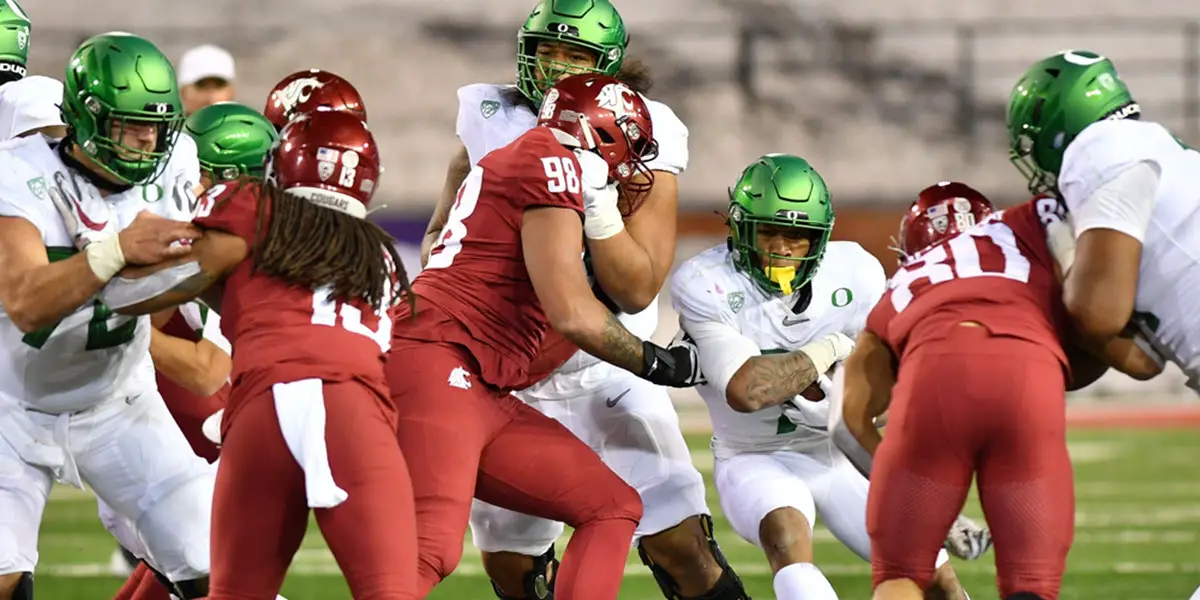This is not the year we envisioned for Oregon’s offensive line. We all expected to have Penei Sewell anchor the left side this fall. However, the pandemic robbed us of the opportunity to watch Sewell dominate the line of scrimmage for one final season as a Duck, as he instead prepares for the 2021 NFL Draft.
Sewell’s opt-out dramatically changed the look of the offensive line going from replacing four starters to a complete position group overhaul, which normally wouldn’t be too big of a difference as most of the line has to learn how to play together anyway, but Sewell was the best offensive lineman in the country last year. It wouldn’t have been a surprise to see this year’s offensive line take a step back.
That hasn’t happened.
This offensive line still has a long way to go before they become a truly elite offensive line, but they are off to a great start. This is Mario Cristobal’s offensive line, built in Cristobal’s vision for what he wants Oregon to look and feel like. This line is bigger and stronger than any previous offensive line we have seen at Oregon before.
Up to this point, Cristobal has been working with an offensive line he inherited from Mark Helfrich, with the exceptions of Sewell and Dallas Warmack. This year’s offensive line is the first year at Oregon where Cristobal had a say in the recruitment of every player along the line and it shows.

Verdell runs through an opening created by Oregon’s offensive line.
Oregon is currently cycling through six linemen of starting quality. Of these six potential starters, with an average height of six feet and four inches and an average weight of 318 pounds. This is a human wall and over the course of a game this wall wears down its attackers.
Washington State came out hot against Oregon and put a lot of pressure on the offensive line and did record a single sack. However, that sack was less the offensive line’s fault and more Tyler Shough’s fault for running into the line when he chose to keep the ball rather than hand it off or throw it.
One of the biggest problems for a new offensive line is penalties. False starts and holding penalties are setbacks that stem from a lack of discipline and technique. Oregon’s offensive line had one holding penalty against Stanford, which was declined, and one false start on special teams right before a field goal attempt.

Junior offensive tackle T.J. Bass pass sets against the Cougars
In week two, the offensive line improved with only one penalty against Washington State and it came during a two-point conversion attempt.
This offensive line isn’t hurting the Oregon offense. Quite the opposite, as Oregon currently has an eye-popping 73% conversion rate on third-downs, and is two-for-two on fourth down. Furthermore, Oregon’s run game is averaging a staggering 7.1 yards per carry and 269 yards per game. Offensive coordinator Joe Moorhead and the running backs deserve some of the credit as well. However, the offensive linemen are creating the holes needed to run the football.
Before the season the offensive line was a position of apprehension and fear. Though after two games the offensive line looks like a strength for this young Oregon team. So far my pre-season fears have gone away concerning the Ducks’ offensive line production, have yours?
David Marsh
Portland, Oregon
Top Photo By: Bob Hubner
Related Articles:
Oregon Enters Playoffs Better Off Than Last Year
Will The Coaching Carousel Kill Oregon's CFP Chances?
The Playoff Formula Hasn't Changed
Oregon Aims to Bury Dawgs, Punch Playoff Ticket in Rivalry Clash
Huskies Are the New Beavers, Stay In Your Lane Kiffin, and the Civil Apple Cup War
Oregon Football: The X-Factor Vs. Washington

David Marsh is a high school social studies teacher in Portland, Oregon. As a teacher he is known for telling puns to his students who sometimes laugh out of sympathy, and being both eccentric about history and the Ducks.
David graduated from the University of Oregon in 2012 with Majors in: Medieval Studies, Religious Studies, and Geography. David began following Ducks Football after being in a car accident in 2012; finding football something new and exciting to learn about during this difficult time in his life. Now, he cannot see life without Oregon football.

